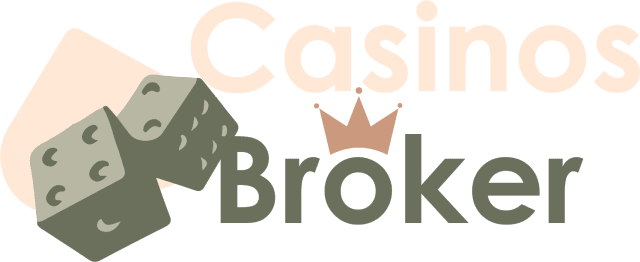The global lottery sector represents a $353 billion market characterized by accelerating digital transformation and evolving regulatory frameworks. For operators considering market entry, success hinges on navigating complex licensing regimes, selecting appropriate technology infrastructure, and building sustainable customer acquisition economics. This analysis outlines the strategic, operational, and financial considerations essential for establishing a competitive lottery business.
Market Structure and Entry Strategy
The lottery industry operates under strict government oversight, with licensing authority typically residing at the state or national level. In the United States, each state maintains independent regulatory frameworks, while international markets impose varying national or regional approval processes. This fragmented regulatory landscape creates both barriers to entry and opportunities for operators able to navigate multi-jurisdictional complexity.
Prospective operators face a fundamental strategic choice: pursue a single-jurisdiction strategy with concentrated regulatory risk, or develop multi-jurisdictional capabilities that diversify exposure while multiplying compliance costs. The optimal approach depends on available capital, risk tolerance, and long-term exit objectives.
Three primary business models dominate the sector. Ticket-based models generate revenue directly from sales and typically achieve the highest gross margins but experience more volatile cash flows. Commission-based structures extract a percentage from partner or reseller networks, offering asset-light scalability but lower margins and reduced customer data ownership. Subscription models deliver recurring revenue with superior predictability—a characteristic particularly attractive to financial buyers—but require sophisticated retention marketing to prevent churn.
 Regulatory Architecture and Compliance Infrastructure
Regulatory Architecture and Compliance Infrastructure
Obtaining and maintaining a lottery license represents the foundational requirement for operations. Application processes typically require corporate documentation, beneficial ownership disclosure, management background checks, and technical platform certification. Licensing fees range from $10,000 to $100,000 depending on jurisdiction, with processing timelines extending from several weeks to multiple months. This extended pre-revenue period necessitates adequate working capital and realistic timeline expectations.
Compliance extends well beyond initial licensing. Operators must implement robust Anti-Money Laundering (AML) and Know Your Customer (KYC) procedures that verify player identity, location, and age before permitting transactions. Modern platforms integrate automated compliance tools that flag suspicious activity patterns, duplicate accounts, and potential fraud vectors in real-time. These systems serve dual purposes: satisfying regulatory obligations and protecting operational integrity.
Age verification systems must reliably confirm minimum age requirements—typically 18 years—while data protection protocols must align with applicable privacy regulations including GDPR in relevant jurisdictions. Regular third-party audits validate ongoing compliance with both licensing conditions and industry standards such as PCI DSS for payment processing.
Given regulatory complexity and the severe consequences of non-compliance (including license suspension or revocation), engaging experienced gaming counsel early in the licensing process represents prudent risk management rather than discretionary expense.
Technology Infrastructure and Platform Economics
Technology decisions fundamentally shape operational capabilities, scalability potential, and eventual enterprise value. Operators must choose between white-label platforms and custom-built solutions, each presenting distinct trade-offs.
White-label platforms offer rapid market entry through pre-configured systems requiring primarily branding and basic customization. This approach minimizes upfront development costs and accelerates time-to-revenue. However, white-label solutions impose constraints on feature differentiation, create vendor dependency, and limit proprietary intellectual property development—factors that may depress valuation multiples in eventual exit scenarios.
Custom development requires substantially higher initial investment—typically $20,000 to $200,000—and extended build timelines. In exchange, operators gain complete control over feature sets, user experience, and technical architecture. Custom platforms enable proprietary innovation, eliminate vendor lock-in, and generate defensible IP that enhances strategic positioning and exit valuation.
Regardless of approach, platforms must incorporate essential infrastructure components. Certified Random Number Generators (RNGs) with third-party verification ensure game integrity and regulatory compliance. Payment gateway integration supporting multiple methods—including cards, e-wallets, and increasingly cryptocurrency—enables frictionless transactions while maintaining PCI DSS security standards. Comprehensive administrative dashboards providing real-time visibility into ticket sales, player behavior, and payout obligations are essential for effective management oversight.
 Security architecture requires multiple defensive layers: SSL encryption for data transmission, firewall protection against external threats, multi-factor authentication for administrative access, and automated anomaly detection flagging suspicious transaction patterns or fraudulent activity. As data breaches carry both regulatory penalties and reputational damage, security represents a foundational rather than discretionary investment.
Security architecture requires multiple defensive layers: SSL encryption for data transmission, firewall protection against external threats, multi-factor authentication for administrative access, and automated anomaly detection flagging suspicious transaction patterns or fraudulent activity. As data breaches carry both regulatory penalties and reputational damage, security represents a foundational rather than discretionary investment.
Capital Requirements and Funding Strategy
Launching a licensed lottery operation requires total capital investment ranging from $50,000 to $400,000, varying based on jurisdiction, technology approach, and initial scale. Beyond licensing and platform development, operators must budget for marketing campaigns, payment system integration, personnel costs, and ongoing audit and maintenance expenses.
Securing adequate funding requires articulating a credible value proposition to investors or lenders. A comprehensive business plan should detail market opportunity, competitive positioning, technology strategy, regulatory pathway, financial projections, and management team capabilities. Financial models must demonstrate path to profitability with realistic assumptions regarding customer acquisition costs, average revenue per user, retention rates, and operational leverage as scale increases.
For equity financing, investors evaluate scalability potential, regulatory risk profile, management experience, and exit opportunity. Debt financing requires demonstrating stable cash flow projections and typically necessitates collateral or personal guarantees. In either case, transparency regarding capital deployment and realistic milestone achievement builds credibility essential for funding success.
Operational Launch and Go-to-Market Execution
Platform launch requires comprehensive pre-production validation. Technical testing must verify functionality across registration, payment processing, draw mechanics, and payout distribution. Beta testing with controlled user groups identifies bugs, validates RNG fairness, and confirms regulatory compliance before public launch. This disciplined approach prevents operational failures that damage early credibility.
Staffing requirements scale with business size but typically encompass customer support, marketing, legal/compliance, technology, and finance functions. Customer service quality directly impacts retention and brand reputation, making training in responsible gaming policies and secure communication protocols essential. For early-stage operators, outsourcing non-core functions can reduce fixed costs while maintaining service quality, with in-house hiring occurring as revenue scales justify the transition.
Marketing strategy must balance multiple acquisition channels. Search engine optimization builds organic traffic, while paid advertising through Google and Meta enables targeted demographic reach. Social media engagement, influencer partnerships, and referral programs amplify brand awareness. Promotional mechanics—welcome bonuses, loyalty points, exclusive draws—incentivize initial trial and repeat engagement. Continuous performance tracking through conversion metrics, channel attribution, and lifetime value analysis optimizes marketing spend efficiency.
Customer Economics and Retention Strategy
While customer acquisition establishes initial player base, retention economics determine long-term profitability. The most successful operators implement structured loyalty programs incorporating tiered rewards, personalized promotions, and exclusive benefits for high-value players. CRM systems segment audiences by behavior, enabling targeted communication that maximizes relevance and engagement.
Subscription models particularly benefit from retention focus, as reducing churn directly impacts recurring revenue stability. Email marketing, push notifications, and in-app messaging maintain ongoing player engagement between draws. Gamification elements—progress tracking, achievement badges, social features—increase session frequency and emotional investment.
Calculating customer lifetime value relative to acquisition cost provides the fundamental unit economics that drive investment decisions and scaling strategy. Operators achieving strong LTV:CAC ratios generate the margin necessary to fund growth while maintaining profitability.
Responsible Gaming and Reputational Risk Management
Responsible gaming programs increasingly represent both regulatory requirements and competitive differentiators. Platforms must integrate self-exclusion options, deposit and wagering limits, session time controls, and reality check reminders. Visible links to problem gambling resources and educational content demonstrate commitment to player welfare.
Beyond compliance necessity, responsible gaming practices mitigate reputational risk and strengthen regulatory relationships. As institutional investors and strategic acquirers increasingly incorporate ESG considerations into investment criteria, documented responsible gaming programs enhance enterprise value and transaction attractiveness.
Regular third-party audits validating game fairness, accurate payout ratios, and responsible gaming tool effectiveness provide independent verification that supports both regulatory standing and market credibility. Publishing audit results demonstrates operational transparency that builds player trust and differentiates operators in competitive markets.
Technology Evolution and Future Positioning
The lottery sector is experiencing accelerating technological disruption. Artificial intelligence enables personalized game recommendations, optimized marketing campaigns, automated customer service, and sophisticated fraud detection. Operators leveraging AI capabilities achieve better customer economics through improved targeting and operational efficiency.
Blockchain technology introduces transparency mechanisms through immutable transaction records and smart contract automation. Decentralized lottery models eliminate intermediary risk while providing provable fairness that appeals to crypto-native audiences. Integration of cryptocurrency payment rails and Web3 wallet support expands addressable markets but introduces additional regulatory considerations in many jurisdictions.
NFT-based rewards represent emerging innovation, allowing operators to offer tradeable digital collectibles alongside or instead of traditional cash prizes. This approach particularly resonates with younger demographics familiar with digital asset ownership. Social gaming integration—livestreamed draws, interactive social media participation, community features—enhances engagement through shared experiences.
Operators must evaluate emerging technologies through dual lenses: immediate competitive advantage and long-term strategic positioning. Platforms built on legacy architecture face increasing technical debt as industry standards evolve. New entrants have the advantage of building on modern infrastructure, while incumbent operators must balance innovation investment against existing system constraints.
Performance Measurement and Scale Strategy
Effective management requires tracking comprehensive KPIs spanning financial performance, customer behavior, and operational efficiency. Financial metrics—revenue, gross margin, customer acquisition cost, lifetime value—reveal business model sustainability and unit economics. Customer metrics—acquisition rate, retention rate, churn, average spend per player—indicate marketing effectiveness and product-market fit. Operational indicators—payout processing time, compliance audit scores, system uptime, support response times—demonstrate execution quality and risk management.
Scaling operations requires validating business model sustainability before expansion. Geographic expansion into new jurisdictions demands understanding local licensing requirements, competitive dynamics, and marketing approaches appropriate to cultural norms. Product expansion through new game formats, jackpot structures, or subscription tiers diversifies revenue streams and mitigates concentration risk.
 Technology infrastructure must scale concurrent with growth. Platform architecture should support increasing transaction volumes, player registrations, and concurrent users without performance degradation. Automation tools and analytics dashboards maintain operational efficiency as complexity increases, while outsourcing relationships can flex capacity without fixed cost escalation.
Technology infrastructure must scale concurrent with growth. Platform architecture should support increasing transaction volumes, player registrations, and concurrent users without performance degradation. Automation tools and analytics dashboards maintain operational efficiency as complexity increases, while outsourcing relationships can flex capacity without fixed cost escalation.
Strategic growth requires balancing expansion velocity against capital efficiency and execution risk. Disciplined operators achieve sustainable scale by validating unit economics, confirming operational capabilities, and maintaining compliance standards throughout growth phases.
Strategic Considerations for Market Entrants
Entering the lottery sector in 2025 offers meaningful opportunity but requires realistic assessment of capital requirements, regulatory complexity, and competitive dynamics. The $50,000 to $400,000 investment threshold creates natural consolidation pressure, with undercapitalized entrants facing distress and well-funded operators achieving scale advantages.
Technology infrastructure choices made at inception persist throughout the business lifecycle, influencing competitive capabilities and eventual exit valuation. Regulatory strategy—single versus multi-jurisdictional—fundamentally shapes risk profile and growth trajectory. Business model selection determines cash flow characteristics, margin structure, and appeal to various buyer categories.
Success requires disciplined execution across licensing, technology, compliance, marketing, and operations while maintaining adequate capital reserves for the extended period before achieving profitability. Operators who navigate these requirements build sustainable businesses positioned for organic growth, potential acquisition, or public market exit as the industry continues its digital evolution.





